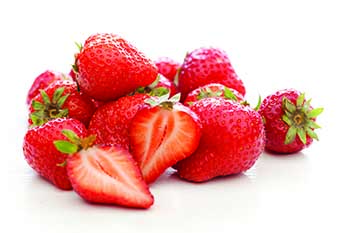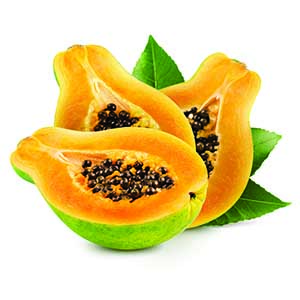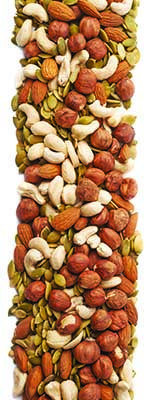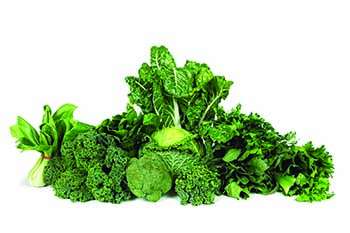 Hydration is an essential component of skin care. Dehydrated skin can compromise the immune function of the skin and cause it to look older and more wrinkled. Skin tissue is constantly being renewed and, depending on factors produced in the dermis, skin can be regenerated every two or three weeks. Targeted nutrition, both dietary and topical, can dramatically increase the moisture level of the skin. Skin hydration can be accomplished from both the inside and outside.
Hydration is an essential component of skin care. Dehydrated skin can compromise the immune function of the skin and cause it to look older and more wrinkled. Skin tissue is constantly being renewed and, depending on factors produced in the dermis, skin can be regenerated every two or three weeks. Targeted nutrition, both dietary and topical, can dramatically increase the moisture level of the skin. Skin hydration can be accomplished from both the inside and outside.
Let’s begin by looking at how hydration works in the skin. There are two ways in which the skin stays moist: stopping water loss – which is referred to as transepidermal water loss (TEWL) – and adding moisture from the outside via application of topical skin care products. The ingredients clients apply to their skin can make a big difference in the hydration status of the skin. Just as with dietary nutrition, clients need to consider using high quality, clean topical nutrition on the skin to get the best results. The skin’s barrier, often referred to as the acid mantle, is responsible for holding in water and lipids and keeping out bacteria and environmental pollution. The skin’s pH plays a big role in the success or failure of the acid mantle. The ideal pH for skin falls around 5.5, which is slightly acidic. Skin with higher pH levels tend to be dry and fragile. Although the purpose of this article is to discuss nutrition for skin hydration, the subject really cannot be covered properly without a brief mention of skin pH and the importance of not compromising skin barrier function by disrupting pH balance with harsh topical soaps and treatments.
Key nutritional players in skin hydration include certain vitamins, essential fats, and antioxidants. The inside-out and outside-in method applies to skin hydration, as with so many other areas of skin care. If clients take these nutrients in through diet and apply them to their skin, the results are increased. It makes sense that in order to build healthy skin, clients need to feed their body the right nutrients, as well as protect it from outside damage.
nutrients in through diet and apply them to their skin, the results are increased. It makes sense that in order to build healthy skin, clients need to feed their body the right nutrients, as well as protect it from outside damage.
Vitamin C - Ascorbic Acid
Most skin care professionals know vitamin C is an essential component in the synthesis of collagen and an antioxidant that helps to fight free radical damage in the skin. In addition to these extremely important jobs, this vitamin also contributes to skin hydration and elasticity.
The research on how vitamin C helps improve skin hydration is not that clear, yet higher intake of dietary vitamin C have been correlated with less dry skin, suggesting that ascorbic acid may affect TEWL.1
A few years ago, Korean researchers, led by Hong-Ryul Kim concluded that the use of topical vitamin C in Asian patients undergoing Fraxel skin resurfacing reduced TEWL and helped to restore skin pH levels. The study followed 44 Korean patients who received two Fraxel treatments spaced four weeks apart. One group used a topical vitamin C product for 12 weeks, beginning one day after the first treatment. The second group did not use topical agents. At zero, four, eight, and 12 weeks post-treatment, the researchers measured colorimetric status, stratum corneum hydration, skin surface lipids, skin pH, and TEWL. Between the two groups, a significant difference was seen in TEWL and skin pH levels, but not in colorimetric status, stratum corneum hydration, or skin surface lipids. The authors concluded, “Topical vitamin C application reduces the injury of the skin’s surface barrier after Fraxel laser and promotes restoration of skin pH. However, there is a limit with increasing skin lightness or decreasing skin redness.”2
When using vitamin C in a skin care routine, it is important to choose form carefully, as delivery method can make a big difference in effectiveness. Ascorbic acid, the basic form of vitamin C, oxidizes quickly when exposed to air. Better choices include the lipid form, tetrahexyldecyl ascorbate, or water-soluble sodium ascorbyl phosphate to ensure that vitamin C is delivered to the skin without oxidizing. Vitamin C can also be obtained from foods such as papaya, bell peppers, broccoli, and strawberries.
 Vitamin E
Vitamin E
Vitamin E is the most potent lipid-soluble antioxidant for skin hydration. It is an essential part of skin cell membranes and has a role in cell signaling and cell-nutrient transport and, therefore, appears to enhance the penetration and resorption of skin lipids, creating an effective regulatory mechanism for restoring and maintaining the barrier function.3 Topically applied, vitamin E is an excellent moisturizer that helps keep the skin healthy and soft.
As with vitamin C, there are many forms of vitamin E. In fact, it exists in eight chemical forms. There are two main categories of this complex vitamin: tocopherols and tocotrienols, each containing four different kinds of molecules (alpha, beta, gamma, and delta).4 Tocotrienols are 40 to 60 times more effective at quenching free radicals than tocopherols.5
Vitamin E has a special link with two other antioxidants: vitamin C and alpha lipoic acid. Both vitamin C and alpha lipoic acid have the ability to take away the extra electron from a used vitamin E molecule, essentially reactivating it. This capacity to recycle and restore its power makes vitamin E a prominent factor in the skin’s first line of defense against free radicals.6
Vitamin E plays an important role in maintaining the barrier function of the skin and appears to enhance the penetration and resorption of skin lipids, making it an invaluable nutrient for locking moisture into the skin and preventing dehydration.7 Good food sources for obtaining vitamin E are nuts, seeds, avocado, sweet potato, and vegetable oils.
 Vitamin B3 - Niacin
Vitamin B3 - Niacin
The B vitamins are a complex and busy group! One important B vitamin is B3, also referred to as niacin or nicotinic acid. This B vitamin has three critical roles in the body: converting glucose to energy, aiding in the production of fatty acids and cholesterol, and facilitating DNA repair and stress responses. Dietary sources of vitamin B3 or niacin include tuna, chicken, turkey, and peanuts.
As a player on the topical nutrition team for skin hydration, niacinamide – vitamin B3’s skin care form – increases the production of ceramides and fatty acids, two key components of the skin’s outer protective barrier. With a strong mantle, skin is better able to keep moisture in and irritants out. For this reason, it is gaining popularity in skin care formulations to support hydration.
Vitamin B5 - Pantothenic Acid
Vitamin B5 is a component of coenzyme A (CoA), an essential coenzyme required for chemical reactions that generate energy from foods such as fat, carbohydrates, and proteins. It is also involved in the synthesis of essential fats, cholesterol, and steroid hormones. Many important hormones, such as estrogen and testosterone, are steroids. In the diet, some good sources of vitamin B5 include avocado, lentils, salmon, and shiitake and cremini mushrooms.
On the topical side, B5 contributes to skin hydration through its role in the maintenance of skin barrier function. When applied to the skin, it converts to pantothenic acid, which works as a humectant by infusing water in the cells, retaining moisture deep within the skin tissues. This role as an effective humectant makes B5 very desirable in topical skin care formulas.8
Vitamin A - Retinol
The vitamin A family includes the retinols and the various compounds derived from vitamin A – a fat-soluble vitamin that comes in various forms: retinol, retinal, and the various retinol esters. Among other important functions, vitamin A supports cell growth and differentiation, which is how it may contribute to hydration status in the skin. Dietary vitamin A comes from eating foods rich in beta carotene, although only a small amount is converted from beta carotene to vitamin A. In the diet, vitamin A comes from sweet potatoes, carrots, dark green, leafy vegetables, dairy, fish, and meat. Liver is an excellent source of vitamin A.
In the topical form, vitamin A improves hydration in and around skin cells in a number of indirect ways, mostly by supporting healthy cell membrane function and encouraging skin cell turnover. By doing so, nutrient transport, waste removal, and reductions in TEWL can be seen in the skin.9
There are many forms of topical vitamin A available for skin care formulations. The main consideration is to balance delivering an effective amount of vitamin A to the skin while managing the side effects that often accompany vitamin A application. Retinoic acid is an effective, bio-available form of vitamin A with the most side effects. Retinols are also very effective but must undergo a transformation to retinoic acid when applied to the skin. Many skin care ingredient manufacturers have developed technologies to lessen the side effects while improving delivery by using encapsulation. The least harsh, yet less effective, forms are: retinyl acetate, retinyl linoleate, hydroxypinacolone retinoate, retinyl palmitate, and retinyl proprionate. It is critical to get adequate vitamin A daily through dietary sources and to apply a topical dose of vitamin A to the skin as part of each night-time skin care routine.
Fatty Acids
There are certain dietary fats that are referred to as essential fatty acids. These fats are essential because the body cannot manufacture them and, therefore, they must be included in diets at risk of deficiency. These fats fall into two categories: omega-6 and omega-3. Omega-6 fats come from vegetable oils such as palm, soybean, and canola. Omega-3 fats are found in fatty fish, fish oil, flaxseed, and walnuts (in much lower levels). In the Standard American Diet (SAD), people typically get far too much omega-6 fats and far too little omega-3. It is recommended that a person’s intake of omega-6 to omega-3 be in a 2:1 ratio, yet in the SAD diet, people are eating closer to 12:1. This imbalance in fat intake leads to an inflammatory state in the body because of the pro-inflammatory hormones created by an overabundance of omega-6 fats. Chronic inflammation triggers a vast number of inflammatory skin conditions such as psoriasis, rosacea, eczema, and acne. Although inflammation is not the same as dehydration, it contributes to a higher need for water in the cells and reduced cell membrane function.
Conversely, when people are deficient in both types of dietary fatty acids, skin cell integrity suffers and barrier function is reduced. Dietary deficiency of these fatty acids results in a characteristic scaly skin disorder, increased epidermal turnover rate, weak cutaneous capillaries that rupture easily, decreased wound healing, and increased TEWL, leading to dry skin. Dry skin is especially common in the elderly. By the age of 80 years, the epidermis may lose as much as 50 percent of its thickness, which accelerates water loss.10
Topically, fatty acids are key players in skin hydration. Omega-6 fatty acids provide hydration in the skin via epidermal homeostasis – they help to balance the flow of fatty acids in and out of the cell membrane.11 The most noteworthy omega-6 fatty acid used in topical formulations is gamma linolenic acid from borage and evening primrose oils. It has been shown to be one of the most effective agents for treatment of skin disorders and for maintenance of healthy skin. Studies show that it is of benefit in the treatment of various skin conditions, including dry skin, eczema, inflammation, wounds, and dermatitis.12
Omega-3 fatty acids support the skin cell membrane of the epidermis, allowing for nutrient transport in and out of the cell, as well as the removal of waste. An intact skin cell membrane is better able to hold onto water and, thereby, increases hydration in the skin cells. In topical products, fish oil is not very desirable as an ingredient due to the fishy smell and heaviness of the oil. The preferred sources for topical skin care include algae and other marine plant sources.
In the case of essential fatty acids as a tool for combating dehydration in the skin, the best delivery vehicle is from diet, with a minor contribution from healthy essential fats in skin care from a source such as gamma linolenic acid (GLA) or marine plant life.
 Lutein and Zeaxanthin
Lutein and Zeaxanthin
Lutein and zeaxanthin are found in dark green, leafy vegetables such as kale and spinach. In one study, researchers found that when study participants consumed 10 milligrams of lutein and two milligrams of zeaxanthin daily, participants experienced an increase in skin hydration, skin elasticity, and superficial lipids. When they combined dietary intake with a topical application, the results got even better with a 20 percent increase in hydration status for both sources.13 This research is a perfect example of the success of the inside-out/outside-in approach for healthy skin nutrition.
The theme of educating about the importance of combining dietary and topical nutrition for skin health is especially important in the exploration of skin hydration. There are many nutritional stars and players involved. Clients should consume a diet rich in colorful fruits and vegetables every day and take care when choosing sources of nutrition for their skin. Clean diet and skin care equates to healthy, glowing skin.
References
1. Cosgrove MC, Franco OH, Granger SP, Murray PG, Mayes AE. Dietary nutrient intakes and skin-aging appearance among middle-aged American women. American Journal of Clinical Nutrition 2007; 86:1225-1231.
2. “Vitamin C Reduces Trans-Epidermal Water Loss Following Fraxel Skin Resurfacing.” Vitamin C Reduces Trans-Epidermal Water Loss Following Fraxel Skin Resurfacing. http://medestheticsmag.com/vitamin-c-reduces-trans-epidermal-water-loss-following-fraxel-skin-resurfacing.
3. Trivedi JS, Krill SL, Fort JJ. Vitamin E as a human skin penetration enhancer. European Journal of Pharmaceutical Science. 1995; 3:241-3.
4. Clarke MW, Burnett JR, Croft KD. Vitamin E in human health and disease. Critical Reviews in Clinical Laboratory Science. 2008; 45(5):417-50.
5. Serbinova E, Kagan V, Han D, Packer L. Free radical recycling and intramembrane mobility in the antioxidant properties of alpha-tocopherol and alpha-tocotrienol. Free Radical Biology and Medicine. 1991; 10(5):263-75.
6. Packer L, Weber SU, Rimbach G., Molecular aspects of alpha-tocotrienol antioxidant action and cell signaling. Journal of Nutrition. 2001 Feb; 131(2):369S-73S.
7. Trivedi JS, Krill SL, Fort JJ. Vitamin E as a human skin penetration enhancer. European Journal of Pharmaceutical Science. 1995; 3: 41-3.
8. Draelos, Zoe Diana, MD. Therapuetic Moisturizers. Dermatologic Clinics. 2000 Oct; 18(4)597-607.
9. Siddharth Mukherjee, Abhijit Date, Vandana Patravale, Hans Christian Korting, Alexander Roeder, and Günther Weindl. Retinoids in the treatment of skin aging: an overview of clinical efficacy and safety. Clinical Interventions in Aging. 2006 Dec; 1(4): 327–348.
10. “The Effectiveness of GLA in Topical Formulations for the Skin.” Bioriginal. https://www.bioriginal.com/page-articles/%EF%BB%BFthe-effectiveness-of-gla-in-topical-formulations-for-the-skin/.
11. Hanley, Karen et al. Keratinocyte Differentiation is Stimulated by Activators of the Nuclear Hormone Receptor PPAR. Journal of Investigative Dermatology. 110( 4):368-375.
12. Trak-Fellermeier MA1, Brasche S, Winkler G, Koletzko B, Heinrich J. Food and fatty acid intake and atopic disease in adults. European Respiratory Journal. 2004 Apr; 23(4):575-82.
13. Palombo P1, Fabrizi G, Ruocco V, Ruocco E, Fluhr J, Roberts R, Morganti P. Beneficial long-term effects of combined oral/topical antioxidant treatment with the carotenoids lutein and zeaxanthin on human skin: a double-blind, placebo-controlled study. Skin Pharmacology and Physiology. 2007 Apr. 2007; 20(4):199-210.
 In her work as a nutritionist, Ginger Downey was a key contributor to the GPNS™ program, where she developed nutrition and behavioral modification protocols for a national wellness program. In her current role is as the co-owner for DermaMed Solutions, her focus is on researching and incorporating the latest scientific advances in skin care into DermaMed’s approach. Downey educates skin care professionals on nutrition to support skin. 610-579-6041 or This email address is being protected from spambots. You need JavaScript enabled to view it.
In her work as a nutritionist, Ginger Downey was a key contributor to the GPNS™ program, where she developed nutrition and behavioral modification protocols for a national wellness program. In her current role is as the co-owner for DermaMed Solutions, her focus is on researching and incorporating the latest scientific advances in skin care into DermaMed’s approach. Downey educates skin care professionals on nutrition to support skin. 610-579-6041 or This email address is being protected from spambots. You need JavaScript enabled to view it.
Want to read more?
Subscribe to one of our monthly plans to continue reading this article.